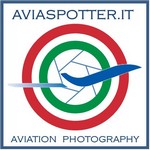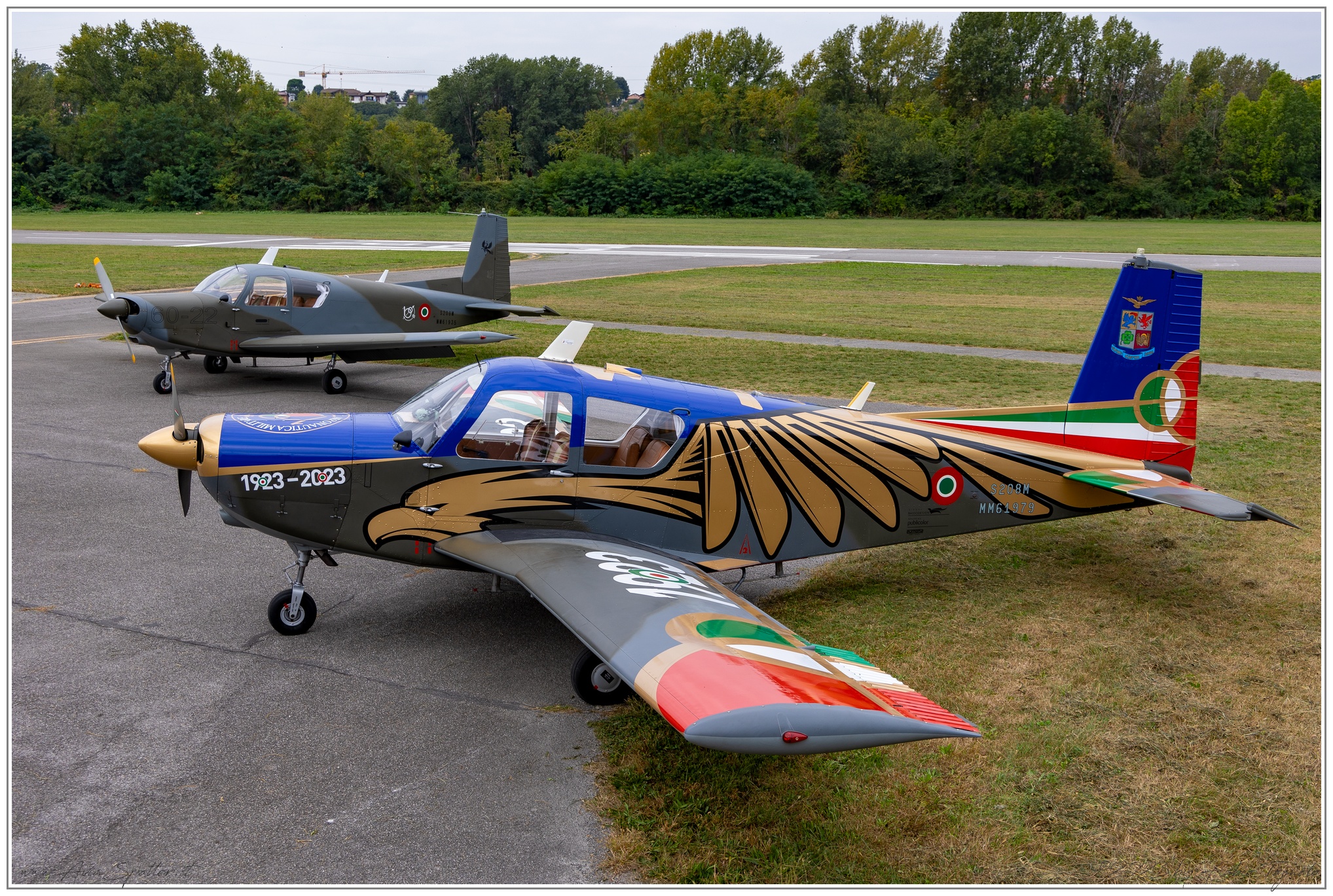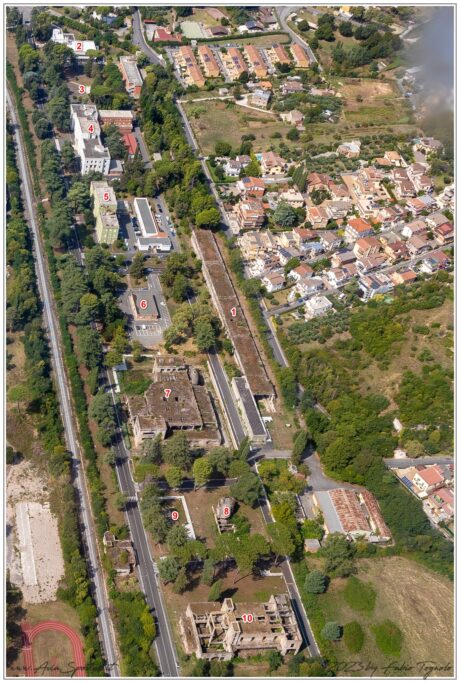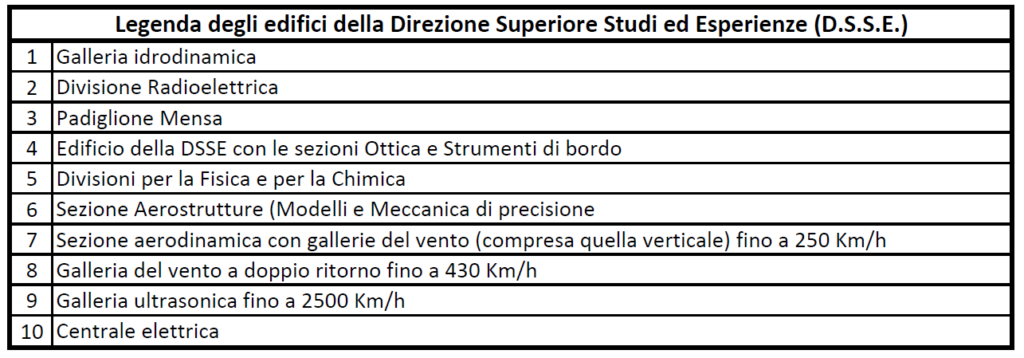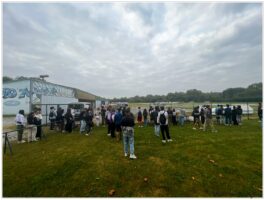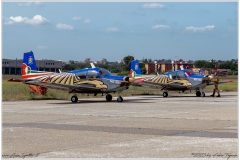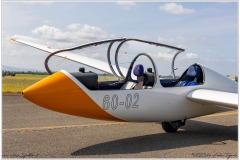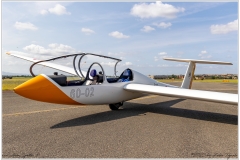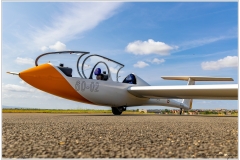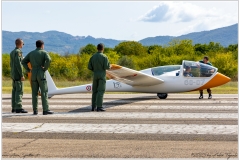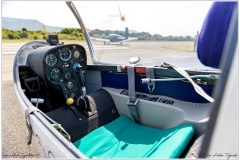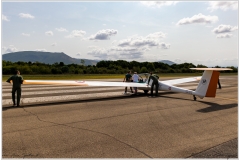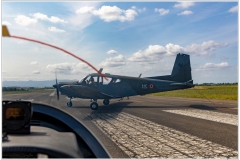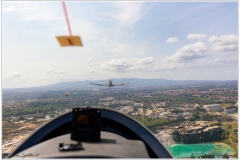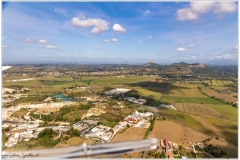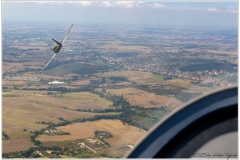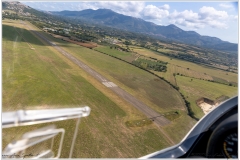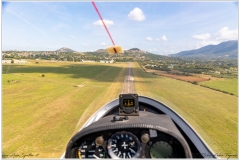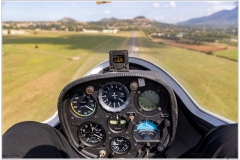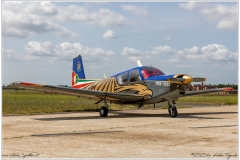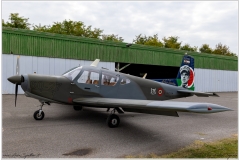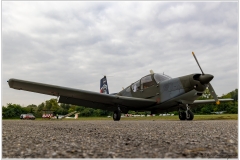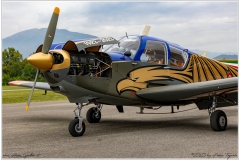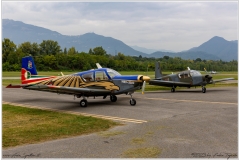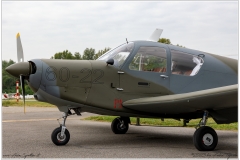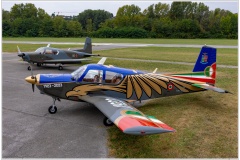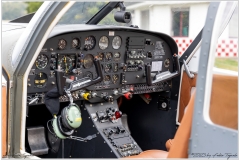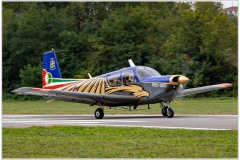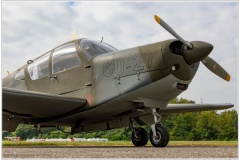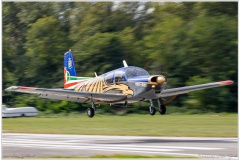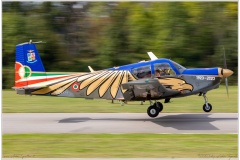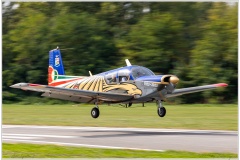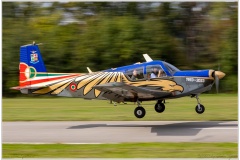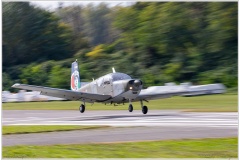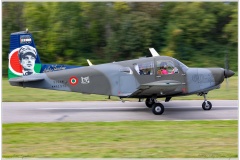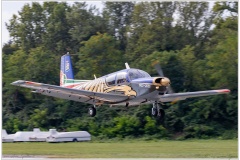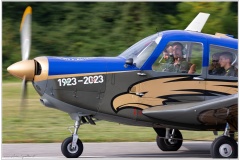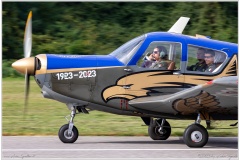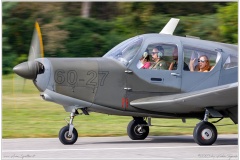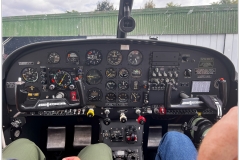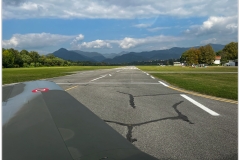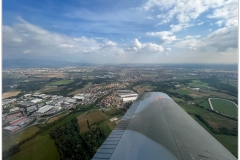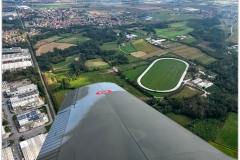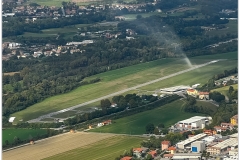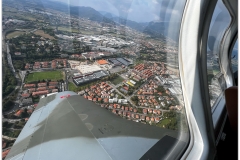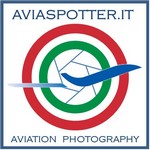Guidonia-Montecelio, 31 August 2023
In the 2023 it fell to the 60th Wing. In the year of the Centenary of the Air Force I decided to visit the Wing which today is based in one of the most glorious and historic airports of the Peninsula: Guidonia.
And so, after the 72nd Wing which teaches how to fly helicopters (the services you find them which and which) and the 70th teaching how to fly fixed-wing aircraft (the services are which and which), in 2023 AviaSpotter.it went to see how to fly without an engine is taught, discovering that the 60th Wing, however, it doesn't just do that.
THE 60th FLIGHT: DISTANT ORIGINS FOR A “YOUNG” FLOCK
Montecelio airport is one of the first sites built by the Air Force, when it did not yet exist as an independent weapon. In the 1916 a school was established here to train pilots desperately needed due to World War I. Guidonia did not yet exist. The airfield was named after Pilot Lieutenant Colonel Alfredo Barbieri (M.O.V.M.), killed in combat in Ljubljana on 18 February 1916. The war ended, the needs cease, and the airport is decommissioned. But rebirth is around the corner. At the beginning of the 1920s the Higher Directorate for Studies and Experiences was born (DSSE) and the testing activities begin. In the years since 1925 to the 1928 the structures still present today were built: the asphalt track 18/36 (one of the structures still used) with the header 18 steeply declining, to allow record-breaking planes weighed down by fuel to take off is an example. But they were present in Guidonia 6 (!!!) wind tunnels, of which 1 vertical for the study of the screw and an ultrasonic one (then at the forefront in the world) with air speed up to 2500 km/h, a hydrodynamic tank of 500 mt (expandable to 1500 mt) for carrying out tests on seaplanes, on the shapes of ships and hulls in general and on torpedoes and many other structures to allow the study of all aspects connected with airplanes and flight in general. The airport was a special place then, where all aspects of aeronautical research were concentrated: from medicine to aerodynamic and engine experimentation, up to the preparation and testing of record-breaking aircraft.
The 27 April 1928, right while testing a parachute, General Alessandro Guidoni loses his life in Montecelio, then Commander of the Aeronautical Engineering Corps. The town that had sprung up around the airport was named after him, then inhabited practically entirely by the staff who worked there and their families. Thus Guidonia-Montecelio was born, name that remains unchanged to this day. We recall here some of the most well-known companies, which originated from this airport:
- Record flight on a closed circuit and record flight in a straight line between Guidonia and Natal (Brazil) of Savoia Marchetti S.64. On both flights the plane was piloted by Arturo Ferrarin and Carlo Del Prete. The closed circuit record was then improved by Fausto Cecconi and Umberto Maddalena on S.64bis;
- World height record for piston engine aircraft on Caproni Ca.161 aircraft, piloted by Mario Pezzi, in 1937. British, after a few weeks, they broke his record and him, aboard the Ca.161bis (a slightly modified Ca.161) he took it back the following year. The record was only broken in 1995.
- The undertaking of the Sorci Verdi: 3 Savoia Marchetti S.79 aircraft in 1938 they took off from Guidonia to reach Rio de Janeiro, in Brazil, which they reached in 24 hours and 20 minutes.
The Second World War saw the heavy destruction of almost all structures. From 18 October 1943 to the 3 June 1944 the airport suffers further 35 bombings, machine-gunning and destruction with incendiary devices. Particularly the night between 23 and 24 October of 1943, when 70 British RAF Vickers Wellington bombers, departing from Lecce Galatina they drop off 107 tons of bombs on the airport and the surrounding city, taunting 12 dead and 18 wounded. After the war the airport hosted the Night Wing and the Baltimore Wing which would merge, respectively, in the 3rd and 36th Wing. From 1949 to the 1963 hosts the AM and Dal Schools Inspectorate 1965 the General Command of Schools, transferred from 2008 in the current headquarters of the Third Air Region Command, a Bari.
RECENT HISTORY
The history of gliding within the Air Force can be traced back to Adriano Mantelli, fighter pilot and Ace of the Royal Air Force during the Spanish War. In the 1951 constitutes on the Rome airport (Roma) the Military Gliding Center. Subsequently the Center was transferred to Guidonia. In the 2013 the Vola a Vela Center is merged with the Guidonia Airport Command, assuming the functions of a Flight Group (but without having a distinctive Group number) It is in the 2015, with the establishment of the 60th Stormo, is placed under his control. The 2 August of this year the Group is renamed as the 202nd Group (see which). The Group has employees 2 squadrons: 422ª and 423ª. Finally, news in recent days (15 last September), the naming of the Stormo after Arturo Ferrarin, who had set off from Guidonia together with Del Prete for some record flights and who met his death in Guidonia 18 July 1941, testing an experimental SAI Ambrosini aircraft 107.
THE TASKS OF THE 60th
The "services" of the 60th Wing are aimed at a vast audience of users; Let's analyze them one by one.
The Academicians Glider flight training has been part of the normal process for Air Force pilots since 2005. After obtaining the BPA (Airplane Pilot's License) in Latina and after the first year of the Academy, future military pilots arrive in Guidonia during the summer and attend a course of approximately 2 weeks where he carried out around twenty flights which allowed him to obtain his gliding pilot's licence. The glider was considered very educational due to the sensitivity and coordination necessary to pilot it, especially regarding the use of the pedals connected to the tail rudder, much more used in this type of flight than powered flight, especially jets.
Aeronautical Culture Courses The second major commitment of the 60th Wing is aimed at high school students from all over Italy, aged between 16 and i 20 age. They are visited every year 4 city (in 2023 it was Varese, Forli, Bergamo and Perugia). The course is divided into 2 weeks of course with a theoretical part on the principles of flight and the functioning of the airplane and a practical part with an acclimatization flight on the SIAI S-208M propeller aircraft. At the end of 2 weeks a ranking is drawn up, taking into account the final scores of the theoretical tests and the flying aptitude demonstrated by the children. I received 3 classified in each course are hosted the summer of the following year in Guidonia, for about ten days, where they will carry out flight activities, cultural and recreational.
Minimum Flight Activity This activity is aimed at senior officers with the rank of Colonel or General, no longer assigned to operational departments that, to maintain the BPM (Military Pilot's License), they must complete six hours of flight every six months. Depending on the profile the Pilot Officer belongs to, the flight activity is thus schematized:
- 1° Profile: six hours on a jet (MB 339A/CD)
- 2° Profile: two hours on a jet (MB 339A/CD) + simulator
- 3° Profile: two hours on a jet (MB 339A/CD) + activity linked to the line of origin
- 4° Profile: six hours on conventional aircraft
Courses in favor of the “General Giulio Douhet” Military School A preparatory flight activity is carried out for the students of the Air Force High School, similar to the Aeronautical Culture Course, which culminates with 4 Acclimatization flights carried out in Guidonia on the Grob Twin Astir two-seater glider.
Aerocooperation The School of Aerocooperation operates within the grounds of Guidonia airport (SAC). This institute, uniquetraining institutionof Defense accredited to NATO, provides to the soldiers of the Italian Armed Forces, of NATO and friendly countries courses in Air Cooperation and in the field of "remote sensing". In particular, JTACs/FACs are trained here (Joint Terminal Attack Controller/Forward Air Controller), military personnel particularly trained to operate in forward positions or even behind enemy lines and from there able to direct operations of fixed or rotary wing aircraft in CAS operations (Close Air Support). SAC operations are among the most complicated and important in modern warfare as they are aimed at hitting targets that, very often, they are practically in direct contact with friendly troops and therefore require absolute precision in the direction of the shot. The JTAC course includes theoretical exercises, simulations and practical exercises. And this is where the 60th Wing enters the field, taking the students into the air and allowing them to realize the different point of view of the pilot compared to "those on the ground".
Air Force selection center Last but not least, the first contact with the Air Force, for all those who will be part of the Blue Army, it is located right in Guidonia. The Selection Center, very recently renovated and transformed into a modern building with everything necessary to best carry out its delicate task, it has its headquarters inside the airport.
THE AIRCRAFT OF THE 60th WING: S-208M AND GLIDER
For its needs the Wing requires at least 2 types of airplanes. The motor aircraft is the SIAI Marchetti S 208M (U-208M according to the designation of the Ministry of Defense). Developed by SIAI S 205 but with a more powerful engine, flies for the first time in May of 1967. Almost half of the entire production of '208, started in 1968, it went to the Air Force which used the machine mainly as a liaison aircraft, towing gliders e, for a short period, primary training. The main differences compared to '205, in addition to the engine, are located in the retractable landing gear, modified instrumentation, 2 access doors, the possibility of mounting the tow hook and the impossibility of mounting the tanks at the wingtips. The machines currently in service have recently been upgraded with new avionics (new IFF, new radios and new VOR receiver with related cockpit instruments).
The main glider used for the activities is the Grob G 103 Twin Astir (G-103A). Produced and marketed since the end of the 70s by the German Grob (world leader in the construction of gliders), the Twin Astir is a two-seater glider made of fiberglass with a medium wing and a T-shaped empennage. The transparent roof consists of 2 pieces that can be opened separately to access the 2 tandem pilot seats. Both places are equipped with instrumentation. The single-track trolley, located under the fuselage, it is fixed.
THE SEA
The Aircraft Efficiency Service takes care of the maintenance of the aircraft assigned to the Wing. Established on October 1st 2007 inherited the duties of the 2nd Aircraft Maintenance Group and was placed under the then Gliding Flight Center, then following the entire history of the 60th Wing. The SEA is assigned the following tasks: – take care of all flight line activities, also following the movements of airplanes along the peninsula for school tasks. SEA staff are essential, during the Aeronautical Culture Courses, for illustrating aircraft systems to students during the ground training phase. – take care of all maintenance activities on the fleet of S-208Ms and gliders, therefore of all corrective and scheduled 1st and 2nd technical level maintenance. This translates, for i ’208, in scheduled inspections at 25, 50, 75 and 100 flight hours, while on the Twin Astir at 100 flight hours or annually. Maintenance is carried out in Guidonia, inside the large hangar located in front of the flight line apron. They mainly concern avionics, mechanics, engine and structure of the airplane. Upon reaching the Calendar Deployment Limit (LIC, 5 age) or Operating Hours Limit (LOF, 1000 hours) the aircraft is sent to the OMA company (Aeronautical mechanical workshops) of Foligno. As for the glider, without engine, hydraulic/pneumatic systems and with very limited avionics, maintenance is limited to checking for any structural damage to the fiberglass structures through non-destructive testing and observations with a magnifying glass. For any operations that cannot be carried out in Guidonia, the gliders are sent to companies specialized in the restoration of fiberglass structures.
CHRONICLE OF THE VISIT: la parola ad Aviaspotter!
The appointment is at 09:00 at the entrance to Guidonia airport. From here you can already understand that there is a lot of history beyond the threshold. The structure is imposing and the architecture is, as you would expect, typical of the twenty years. 

After entering the first stop is at the headquarters of the 202nd Flight Group, recently renamed. The Arabian Phoenix, emblem of the Wing, welcomes visitors. I 3 seagulls, emblem of gliding pilots, they sail above the front door which, around you, it is surrounded by the typical '208 camouflage. The Italian cockade is located to the left of the door: I would say that the symbolism of everything that awaits us is complete.


I am immediately informed that the Commander is waiting for us and so we immediately go towards the Command building.
Pilot Colonel Michele Cesario welcomes us into his office. 

We then go to the SEA hangar where we meet the Ten. Col. Maurice C. which tells us the technical details of the machines supplied and the secrets of their maintenance. We thus come to discover that the number of machines supplied allows their exploitation to be rather limited: it never happens that the LOF of 1000 hours is passed before the LIC of 5 age. While we are talking I take the opportunity to photograph the Commander while he is taxiing with one of the Special Colors and it is pointed out to me that it is precisely the one that won the prize at the Tattoo. 

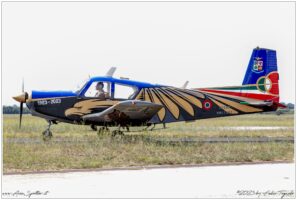

Time always passes very quickly when it comes to airplanes and the time comes when we have to leave SEA too.
The next stop is the flight line, at the header 18 of the asphalt track, slightly lower than the downhill part built at the time for the departure of record distance flights: in fact, they are waiting for me to try a flight on one of the Stormo's Twin Astirs: today we fly without an engine!!! The winners of the Aeronautical Culture courses are gathered under the canopy next to the runway 2022 who are spending their reward period in Guidonia: the enthusiasm that shines through them is palpable and the atmosphere is festive but concentrated. I put on the parachute and move towards the glider: I will fly on the 60-02 with Major Carla A., former helicopter pilot and now Gliding Instructor.
While we wait for our turn I chat a little with 2 students of the Drago VI course who, after finishing the first year of the Academy, I'm here for my gliding certification. They had arrived in Latina the day before my service on the 70th of last year (that you can find which and which).
Finally the time comes to get on board: I climb over the side wall of the front seat of the Twin Astir and lie down, literally, on the seat. The place isn't a lot but the location is convenient. No need for headphones or intercom: Carla, which is a few centimeters behind me, she can speak in a normal tone of voice and I can hear her without problems. The roofs are closed and I see our '208 tow pulling right in front of us.
The tow rope is tightened and the take-off roll begins. The noise of the SIAI's Lycoming is distant and the rustle of the air on the wings becomes louder and louder. Just a few meters and we get up on the asphalt ribbon, a little higher than the plane in front of us, going up more and more.
The panorama around Guidonia extends below us, with the characteristic Travertine quarries dotting its plain. Let's go up to 600 feet per minute, about 65 knots of speed, with our tow stationary a few meters ahead, joined us with the orange rope.
Carla alerts me to the release which occurs with a loud metallic noise, immediately followed by the tug's fast dive to the left.
We are left alone with the hissing of the wings, flying over the hills around Guidonia and every now and then encountering some bubbles of hot air that move us upwards. We fly over the original municipality of Montecelio, then united with that of Guidonia.
From up here we can see the original DSSE buildings very well and I photograph them from this truly privileged position. The feeling of flying in a glider is unparalleled: the only thing that separates us from the flow of air is the transparent canopy that envelops us and gives us a very strong sensation of truly flying free. Unfortunately the variometer begins to point the needle downwards and from the position we have in relation to the runway I understand that the flight is about to end: muzzle down, We veer to the left to align ourselves and we return to being downlanders, accompanied by the vibrations of the wheel on the asphalt.
A blast of fresh air bursts into the passenger compartment when we open the roof: the time has come to get off this bird with long long wings. I remove the parachute, I return it: the experience is over.
We head towards the exit and my companion Av. That. Benedetta S. warns me that there will be the possibility, during the press conference to present the Aeronautical Culture course which will be held soon in Valbrembo, to also fly on the '208. I won't be asked.
The other photos of the day can be found below.
Valbrembo, 13 October 2023
And here we are, following the red thread that binds us to the nearby experience of Guidonia and with the same protagonists, to see up close how an Aeronautical Culture course takes place.
As soon as I parked the car I found myself among dozens of high school kids, They were also present here for the theoretical day of contact with the airplane.
The press conference was held in the premises of the flying club which made its facilities available to the Air Force for this important event. At the end, a souvenir photo of those present with the school children: a really nice group!!! 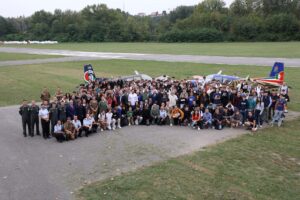

The kids crowd into groups around the planes with the doors and engine hoods open and begin to become familiar with the machines that will take them on flights next week. In the meantime the familiarization flights begin and I take the opportunity to photograph take-offs and landings.
Finally my turn comes too: I sit in the left rear seat, behind the pilot who, per l’occasione, will be Lieutenant Colonel Simone D.P., Instructor Pilot of the 60th Wing.
The flight will be, clearly, very different from the one carried out just under 1 month and a half ago in Guidonia: this time we fly with the engine, but I believe it will not be a less interesting experience.
The cockpit is cramped but less than I thought: in 4 It's very comfortable. Even the noise, despite being quite strong, it is however bearable and the lack of headphones and earplugs is not felt too much.
The pre-flight checks and the start-up take up only a few minutes and in a short time we line up on the runway of the “Sergio Aldo Capoferri” airport. Throttle full forward, release the brakes and the '208 shoots forward. I 260 Lycoming horses quickly bring us to takeoff speed and we begin the climb, not without having first retracted the trolley.
We rise into the sky of the Bergamo countryside, still unusually hot for this season and we are starting to taste the performance of the small SIAI single-engine aircraft.
Simone shows us the agility characteristics of the '208 with some accentuated turns that, without bordering on acrobatics, highlight characteristics that make us understand why this aircraft, in recent years, it was considered suitable for the basic training of Academy cadets, when the '260 of the AM, because of problems, they had been grounded.
The end of the flight is approaching and, as per aeronautical tradition, the landing is preceded by an overflight of the runway and an opening, in this case on the left, to get rid of the speed.
In finale flap, cart down and very gentle touch of the wheels on the asphalt. We clear the runway and return to the parking lot by taxiing on the grass.
We are the last to turn off the engine, and, thanks to the fact that the boys have already left, silence takes over the airport again. It's over for today.
Next Monday the flights will alternate for a long time, filling the air with the noise of the engines and the joyful screams of these young people who are beginning to savor the thrill of flight, thanks to the Aeronautical Culture Courses.
Guidonia's photos
The photos of Valbrembo
AviaSpotter.it would like to thank: The General Staff of the Air Force for authorizing the photographic service and the flight activity, the Commander of the 60th Wing Col. Pil. Michele CESARIO, he Ten. Col. Stefano HEAD (Head of Media Ops Section), the Maj. Pil. Carla A. (pilot of my flight on the Twin Astir), he Ten. Col. Pil. Simone D.P. who piloted the 60-22 of the flight to Valbrembo, the P.I. Officer. Magg. Pil. Stefano D.I., l'Av.Approx. Benedetta S. and the 1st Av.Ca. Vanessa A. for their welcome and constant support during the preparation of the report.
Text and Photos by/Text and images by Fabio Tognolo.
